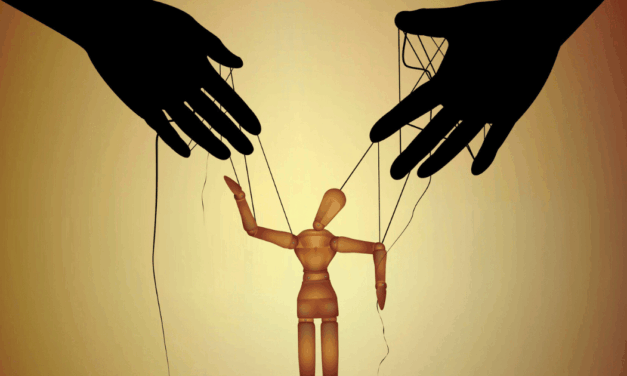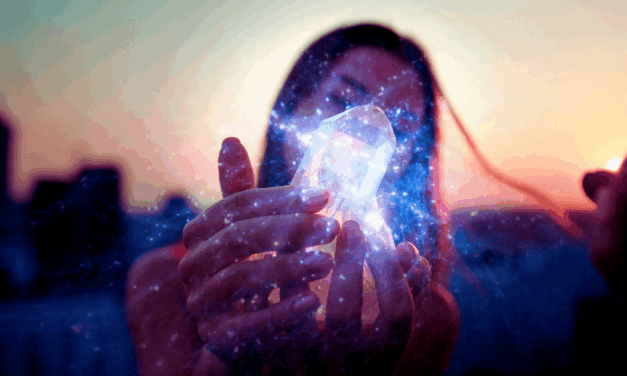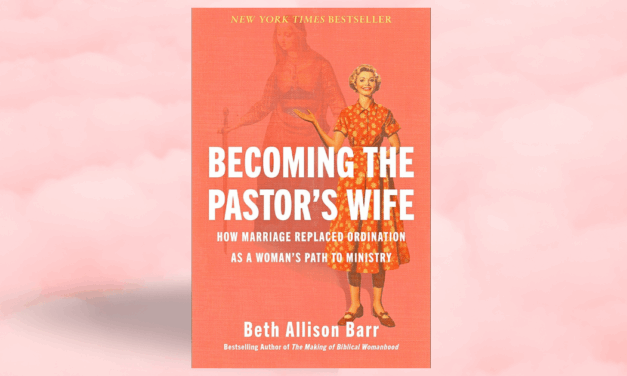Listen to this article (17:29 min)
This article was published exclusively online in the Christian Research Journal, volume 48, number 02 (2025).
When you support the Journal, you join the team and help provide the resources at equip.org that minister to people worldwide. These resources include our ever-growing database of more than 2,500 articles and Bible Answers, as well as our free Postmodern Realities podcast.
Another way you can support our online articles is by leaving us a tip. A tip is just a small amount, like $3, $5, or $10, which is the cost of a latte, lunch out, or coffee drink. To leave a tip, click here
“By waking in your dreams, you can waken to life.” —Stephen LaBerge1
Have you ever had a dream so intense that you could have sworn it was real? Or maybe you experienced something fantastic in your dream, like you were flying or you had some other superpower? Or maybe you had a deep conversation with philosophers of the past about the meaning of life? Dreams are generally thought of as a compilation of your experiences, thoughts, and emotions, sort of like the brain unscrambling what happens during the day and creating an alternate dream reality at night. Sometimes they get a bit insane, too (for example, why is my deceased Grandpa hanging out with my boss in the chocolate factory I visited last week?).
Dreams are a big part of our lives — the average person dreams for two hours per night2 and roughly six years over the course of their lifetime. What could we achieve if our dreams were useful and helped us solve problems or overcome fears? Some people claim it’s possible and that our dream state can directly help us resolve some of our awake state issues. These kinds of dreams are called “lucid dreams” — when a person knows they are dreaming and can consciously control what happens in their dreams. You may be familiar with the term “lucid dream” because of various films like Vanilla Sky (Paramount, 2001), Waking Life (Fox Searchlight Pictures, 2001), and Inception (Warner Bros., 2010), or the Netflix series, Behind Her Eyes (2021). In Waking Life, the protagonist consciously encounters various people in his dreams and asks them philosophical questions about life, free will, and other topics. The opening scene features a little boy and a little girl playing a paper fortune-telling game, and his fortune is “Dream is destiny.”3 That seems to be the common theme of those who promote lucid dreaming — that dreams can impact our future, in this life and beyond. Some proponents claim that lucid dreams help us experience joy while sleeping that maybe we cannot or simply have not experienced in real life. Co-authors of the book Lucid Dreaming Plain and Simple note, “Often when people become lucid, they report a kind of spontaneous euphoria in which they feel a strong sense of energy and mastery coupled with a profound sense of awareness and clarity.”4 While a conversation about lucid dreams may yield questions about potential benefits and dangers of the practice, Christians should consider whether it’s moral to take part, especially because lucid dreams are often connected with the New Age and the occult.
Lucid Dreams Throughout History
Lucid dreams are dreams in which the person who is asleep is conscious that they are dreaming. They can control who they interact with, what they experience, and in some cases, when it ends. At the outset, we should address the key questions: Are people really able to experience lucid dreams? And, if so, is the experience verifiable? The short answer to both questions is yes, at least according to various scientists and researchers in the West who have tackled the topic over the last century. But to find the earliest historical recordings of lucid dreaming, we must travel East. For centuries, Tibetan monks have been practicing “dream yoga” — a process by which the practitioner learns how to become conscious during dreams. Although they are not asleep while exercising dream yoga, the yogis are preparing for lucid dream experiences. Hindus have a similar practice called Yoga Nidra.
In the West, lucid dreaming is less associated with religion (though not completely detached) and more related to psychology. Interestingly, the Greek philosopher Aristotle alluded to the ability to be conscious while dreaming in On Dreams, stating, “When one is asleep, there is something in consciousness which declares that what then presents itself is but a dream.”5 Although there have been references here and there about consciousness and dreaming since Aristotle, lucid dreaming started coming to the forefront in the West in the 20th century. Dutch psychiatrist Frederik Willem van Eeden (d. 1932) coined the term “lucid dream” in 1913 in his article, “A Study of Dreams.” He noted that he intentionally avoided using the terms conscious and unconscious in his analysis, but he still suggested that lucid dreams are controllable by the dreamer: “In these lucid dreams the reintegration of the psychic functions is so complete that the sleeper remembers day-life and his own condition, reaches a state of perfect awareness, and is able to direct his attention, and to attempt different acts of free volition.”6 Some have suggested that, although he used the term “lucid dream,” van Eeden was not referring to how we think of them today as the conscious awareness of being in a dream; rather, he was referring to “mental clarity” and ability to take the dream in and understand it.7 In other words, he thought lucid dreams were simply dreams we could remember and understand, not necessarily situations we could control consciously.
In the decades that followed van Eeden’s dream study, several other researchers tackled the topic of lucid dreams. In 1968, British parapsychologist Celia Green published a book called Lucid Dreams (Institute of Psychophysical Research) in which she described how people could gain control of their dreams. Although Green’s research dealt primarily with psychic and out-of-body experiences, she was the first to predict that lucid dreams were correlated with rapid eye movement (REM) during sleep.8 Green’s suspicions about the REM connection to lucid dreams were confirmed in an experiment in 1975 by Keith Hearne, a British psychologist who discovered a way to communicate with someone in a lucid dream state through coded eye movements.9 Hearne also invented a “dream machine,” which is on display at London’s Science Museum. The machine is designed to help trigger lucidity in a dreamer.10 In 1976, Scott Sparrow, a psychotherapist associated with the Edgar Cayce Association for Research and Enlightenment,11 published a book about lucid dreams as related to Cayce’s psychic readings. Sparrow later founded the DreamStar Institute, an organization designed to train clinicians on how to interpret dreams.
Perhaps the most notable lucid dream researcher, known as the “godfather of lucid dreams,” entered the scene in the 1980s. While he was a PhD student at Stanford University, psychophysiologist Stephen LaBerge began researching various aspects of lucid dreaming, including techniques to induce lucid dreams at any time. Because of his research and the results produced, he founded the Lucidity Institute in Hawaii in 1987. LaBerge has published a lot since the 80s, including several studies that explore lucid dreaming.12 LaBerge believes that lucid dreams are helpful because they aid in clarifying real-world situations. In their book, Exploring the World of Lucid Dreaming, LaBerge and his co-author, Howard Rheingold, wrote, “Properly practiced, lucid dreaming can enhance your ability to see the ‘stars’ in any situation, to mindfully look for a better way of doing things, to become an active shaper of your destiny, to move your control expectations from external toward internal.”13
Research about lucid dreams continues even today. Studies range from researching potential impact on mental health14 to whether it is possible to communicate with someone while they are dreaming. For example, in 2021, a team of international researchers attempted to speak with 36 participants who were asleep and engaged in a lucid dream. The results were mixed, but the research has spawned more interest in the scientific community to continue to investigate lucid dreams. In fact, along with a couple of his coresearchers, LaBerge commented on the journal article: “A recent study…illustrates how experimenters can question lucid dreamers during ongoing dreams and asks whether more extended two-way communication during lucid REM sleep dreaming is feasible.”15 In other words, they are encouraged by the research. The question, which will be addressed below, is if lucid dreams are real, should Christians pursue them?
The New Age and Occult Connection
Throughout my research on this topic, I discovered that many proponents of lucid dreams are involved in New Age practices or some aspect of the occult. For instance, meditation is a key part of lucid dream practice. Author and therapist, Damian Blair, says, “You can achieve a more focused state of mind and perceive things that happen in your dream state with more awareness….Meditation is a great way to improve your mindfulness and increase awareness of yourself.”16 Christian Research Institute president Hank Hanegraaff clarified the difference between worldly meditation and biblical meditation like what we find in the Psalms: it has to do with our purpose. Worldly meditation focuses on the self, while biblical meditation focuses on God.17 In the various books, articles, and videos I found regarding meditation and lucid dreaming, the focus was overwhelmingly on the self.
In addition to meditation, some lucid dream advocates encourage the use of crystals to promote better experiences. Samantha Fey, author of The Awake Dreamer, says “Certain crystals can facilitate better dream recall.…Crystals can receive, hold, direct, project, and reflect light, so it make sense that they can help us with our dreams.”18 The Suburban Witchery website offers a list of “8 Crystals for Lucid Dreaming.”19 To be fair, not all lucid dreamers believe crystals work. In fact, the Lucid Guide website comes out strongly against anyone claiming they do: “While crystals and minerals are certainly absolutely beautiful, inspiring, and a testament to the beauty of the universe in which we live….It remains unethical to make claims about their use in treating or influencing physical or psychological states.”20 Nevertheless, you need to know that crystals are connected to the New Age, as former Christian Research Journal editor Elliot Miller explained: “Demonic energy can work through people’s belief in magical objects.” He continued, “When people associate crystals with an occult understanding of universal energy and place faith in them for healing or other desired ends, with their free wills they are opening up a door for demonic intrusion and deception.”21 In other words, don’t play with fire and assume crystals will help you achieve anything in dreamland.
Regarding demons, there have been some anecdotes of people encountering demonic creatures while in a lucid dream. One contributor to the “Lucid Dreaming” Reddit said, “I have lucid nightmares at least once a week, before, they always had the same shadowy demon always in the back watching me.”22 Another recounted a lucid dream involving her father when another being entered the dream: “I remember very vividly (but I can’t recall the exact shape or form of anything) that my father promptly turned into an unrecognisable inhuman form (whenever I try to recall, I’m just imagining some black disfigured form, its [sic] hard to explain.) and spoke in a deep…I think guttural voice and in an unknown language.”23 Stephen LaBerge spoke about demonic beings in lucid dreams, but minimized the situation, denying that people should be concerned or fearful of demons in their dreams: “No, you want to transform the demons into angels. They’re messengers as they were of wholeness and if you accept them, they transform.”24 On the one hand, I can understand where LaBerge is coming from because lucid dreams are supposed to put the dreamer in charge. However, demons are real, and we have no power to transform them. Scripture says, “Submit yourselves, then, to God. Resist the devil, and he will flee from you” (James 4:7).25 The Bible also tells us to “Put on the full armor of God, so that you can take your stand against the devil’s schemes” (Ephesians 6:11). Neither of these verses say we can transform the evil spirts; rather, we are to “resist” and “stand against” them.
Finally, consciousness itself should be addressed. Although in the lucid dream sense, consciousness refers to being aware or knowing you’re in a dream, consciousness in the New Age sense means connection to a higher self or some kind of universal energy. New Agers often refer to a collective consciousness, that we’re all connected with each other and the divine. David Wilcock,26 author of Awakening in the Dream and frequent guest on History Channel’s Ancient Aliens, has spent his life evaluating his dreams and trying to connect the dots with his spirituality. He writes, “My dreams were making it clearer that I needed to somehow form a bridge from the world of UFO research into the spiritual side of dreaming, lucidity, ancient spiritual teachings, and higher consciousness.”27 Lucid dreams do not offer special opportunities to commune with the divine. Romans 10:17 says, “Consequently, faith comes from hearing the message, and the message is heard through the word about Christ.” Our opportunity to be with God comes through knowing Christ, and we know Christ by knowing the Word of God. Hebrews 4:12 says, “For the word of God is alive and active. Sharper than any double-edged sword, it penetrates even to dividing soul and spirit, joints and marrow; it judges the thoughts and attitudes of the heart.” We don’t have to seek out false light when the light of the Lord is alive and well within us, so long as we seek Him and know Him.
Morality and Lucid Dreams
If lucid dreams are real, can they be immoral? Much could be said on this topic, but one common theme throughout my research is that lucid dreams give the dreamer total freedom. If you want to fly, you can fly! If you want to talk with Aristotle, you can talk with Aristotle (or at least the Aristotle you consciously create in your dreams)! If you want to have an affair with your neighbor…wait, isn’t that taking it too far? How far is too far in lucid dreaming? If we are aware, and if we can choose our own adventure, so to speak, do those choices in our dreams have eternal consequences? Can we sin while we are dreaming if we’re aware that we’re dreaming? Some may argue “no” because your dreams aren’t really real, even if you are conscious that you are dreaming. However, we’ve all had dreams that have impacted our real lives. I think of wives who have woken up angry with their husbands because in the wife’s dream, the husband did something despicable. It wasn’t real, but the wife still felt emotionally escalated against her husband when she woke up.
Further, how do choices we make in lucid dreams affect our waking thoughts? If someone has an affair with their neighbor in a lucid dream, does that result in lustful thoughts during the daytime hours? Sin is something we should take seriously, and Jesus said it quite plainly: “If your right eye causes you to stumble, gouge it out and throw it away. It is better for you to lose one part of your body than for your whole body to be thrown into hell. And if your right hand causes you to stumble, cut it off and throw it away. It is better for you to lose one part of your body than for your whole body to go into hell.” If lucid dreams cause you to stumble, gouge them out. Interestingly, even in the New Age, there are consequences for your dream actions: “Lucid dreaming isn’t tax free, karmically,” author and spiritualist Andrew Holecek said. “You can actually create negative karma if you’re indulging your wildest fantasies, which may or may not be to benefit all sentient beings.”28 If New Agers acknowledge the potential sins related to lucid dreams, albeit in a misled way related to karma, we should, too. This is not to say that lucid dreams are sinful per se; instead, one should consider the implications on our lives and minds.
Ultimately, the world may promise us freedom in dreams or in life, but our freedom is found in Christ. Remember, “It is for freedom that Christ has set us free. Stand firm, then, and do not let yourselves be burdened again by a yoke of slavery” (Galatians 5:1). Do not become a slave to false ideas or the pursuit of worldly things. Don’t let any earthly thing become such an obsession that it takes your thoughts away from Christ. This isn’t to say, as I noted above, that lucid dreaming is morally unconscionable or sinful; rather, as with all things of the world, it can become an idol. If you choose to engage in lucid dreams, don’t let them rule your life. Instead, “Set your minds on things above, not on earthly things” (Colossians 3:2).
Lindsey Medenwaldt is the Director of Ministry Operations at Mama Bear Apologetics and the author of Bridge-Building Apologetics (Harvest House, 2024). She holds a master’s in apologetics and ethics from Denver Seminary, a JD from St. Mary’s School of Law, and a master’s in public administration from Midwestern State University.
NOTES
- Stephen LaBerge, Lucid Dreaming: A Concise Guide to Awakening in Your Dreams and in Your Life (Sounds True, 2004), 10.
- “Brain Basics: Understanding Sleep,” National Institute of Neurological Disorders and Stroke, last reviewed on February 25, 2025, https://www.ninds.nih.gov/health-information/public-education/brain-basics/brain-basics-understanding-sleep.
- Waking Life, written and directed by Richard Linklater, Fox Searchlight Pictures, 2001. To view the opening scene, visit “dream is destiny — waking life,” mahallenin kalbi, March 12, 2019, YouTube, video, 1:30, https://youtu.be/GcSg-Mx-SRo?si=chhz_2yAtAqSVyyq.
- Robert Waggoner and Caroline McCready, Lucid Dreaming Plain and Simple: Tips and Techniques for Insight, Creativity, and Personal Growth (Red Wheel, 2020), 10.
- Aristotle, On Dreams, trans. J. I. Beare, https://classics.mit.edu/Aristotle/dreams.html.
- Frederik van Eeden, “A Study of Dreams,” Proceedings of the Society for Psychical Research 26 (1913), 5, available at https://dreamscience.ca/en/documents/New%20content/lucid%20dreaming%20pdfs/vanEeden_PSPR_26_1-12_1913.pdf.
- “What is Lucid Dreaming?” Lucidity Institute, accessed April 2, 2025, https://www.lucidity.com/LucidDreamingFAQ2.html#LD.
- See Benjamin Baird et al., “The Cognitive Neuroscience of Lucid Dreaming,” Neuroscience and Biobehavioral Reviews 100 (2019): 305–23, https://doi.org/10.1016/j.neubiorev.2019.03.008.
- See Keith Hearne, “Lucid Dreams: An Electro-Physiological and Psychological Study” (PhD thesis, University of Liverpool, 1978), https://www.keithhearne.com/wp-content/uploads/2014/12/Lucid-Dreams-LQ.pdf.
- See Rebecca Casale, “Interview with Dr Keith Hearne,” World of Lucid Dreaming, accessed April 2, 2025, https://www.world-of-lucid-dreaming.com/keith-hearne-interview.html. To view an image of Hearne and his dream machine at London’s Science Museum, see https://www.keithhearne.com/science-museum-london/.
- For more about the “Sleeping Prophet” Edgar Cayce, see Lindsey Medenwaldt, “Edgar Cayce: The Would-Be Sleeping Prophet,” Christian Research Journal 46, no. 4 (2023), https://www.equip.org/articles/edgar-cayce-the-would-be-sleeping-prophet/.
- See, for example, Stephen LaBerge et al., “Smooth Tracking of Visual Targets Distinguishes Lucid REM Sleep Dreaming and Waking Perception from Imagination,” Nature Communications 9 (2018), https://doi.org/10.1038/s41467-018-05547-0; and Stephen LaBerge et al., “Pre-Sleep Treatment with Galantamine Stimulates Lucid Dreaming: A Double-Blind, Placebo-Controlled, Crossover Study,” PLOS One 13, no. 8 (2018), https://doi.org/10.1371/journal.pone.0201246.
- Stephen LaBerge and Howard Rheingold, Exploring the World of Lucid Dreaming (Ballantine Books, 1990), 164.
- See Michelle Carr et al., “The Effects of Lucid Dreaming and Nightmares on Sleep Quality and Mental Health Outcomes,” Behavioral Sleep Medicine 23, no. 1 (2025): 133–40, https://doi.org/10.1080/15402002.2024.2423297; Dolly Krishnan, “Orchestration of Dreams: A Possible Tool for Enhancement of Mental Productivity and Efficiency,” Sleep and Biological Rhythms 19, no. 3 (2021): 207–13, https://doi.org/10.1007/s41105-021-00313-0; and Brigitte Holzinger et al., “Cognitions in Sleep: Lucid Dreaming as an Intervention for Nightmares in Patients with Posttraumatic Stress Disorder,” Frontiers in Psychology 11 (2020), https://doi.org/10.3389/fpsyg.2020.01826.
- Benjamin Baird et al., “Two-Way Communication in Lucid REM Sleep Dreaming,” Trends in Cognitive Sciences 25, no. 6 (2021): 427–28, https://doi.org/10.1016/j.tics.2021.04.004.
- Damian Blair, A Beginner’s Guide to Lucid Dreaming: How to Explore the Lucid Dream World and Master Oneironautics (pub. by author, 2021), 55, 60.
- “Comparing Biblical and Worldly Perspectives on Meditation,” video, updated February 22, 2019, https://www.equip.org/video/comparing-biblical-and-worldly-perspectives-of-meditation/.
- Samantha Fey, The Awake Dreamer: A Guide to Lucid Dreaming, Astral Travel, and Mastering the Dreamscape (Hampton Roads, 2022), 235.
- “8 Crystals for Lucid Dreaming,” Suburban Witchery, last accessed April 2, 2025, https://www.suburbanwitchery.com/blog/8-crystals-for-lucid-dreaming.
- Daniel Love, “Crystals and Lucid Dreaming,” The Lucid Guide, last accessed April 2, 2025, https://www.thelucidguide.com/techniques/crystals-for-lucid-dreaming.
- Elliot Miller, “Crystals and the New Age,” updated October 27, 2022, https://www.equip.org/articles/crystals-and-the-new-age/.
- Emergency-Monitor-78, responding to “Has any one seen demons or the such in their lucid dreams” subreddit, Reddit, last accessed April 2, 2025, https://www.reddit.com/r/LucidDreaming/comments/rf9y3x/has_any_one_seen_demons_or_the_such_in_their/.
- Sixbones, “Can demons be encountered in lucid dreams?” subreddit, Reddit, last accessed April 2, 2025, https://www.reddit.com/r/Catholicism/comments/vqb03v/can_demons_be_encountered_in_lucid_dreams/.
- Stephen LaBerge, “Lucid nightmares as Messengers of Wholeness: Stephen Laberge,” May 23, 2016, Science and Nonduality, YouTube, video, 2:13, https://youtu.be/Y43JSPivpKo?si=OgpNI-KdOpoE5rZ_.
- Bible quotations are from the NIV.
- For more about David Wilcock, see Lindsey Medenwaldt, “Humanity’s Ascension: Assessing the History Channel’s New Age, Time Travel Guru David Wilcock” Christian Research Journal 43, no. 3 (2021), updated March 9, 2023, https://www.equip.org/articles/humanitys-ascension-assessing-the-history-channels-new-age-time-travel-guru-david-wilcock/.
- David Wilcock, Awakening in the Dream (Dutton, 2020), 268.
- “Andrew Holecek: The Path of Dream Yoga,” interview with Tami Simon at Sounds True, https://resources.soundstrue.com/transcript/andrew-holecek-the-path-of-dream-yoga/.









